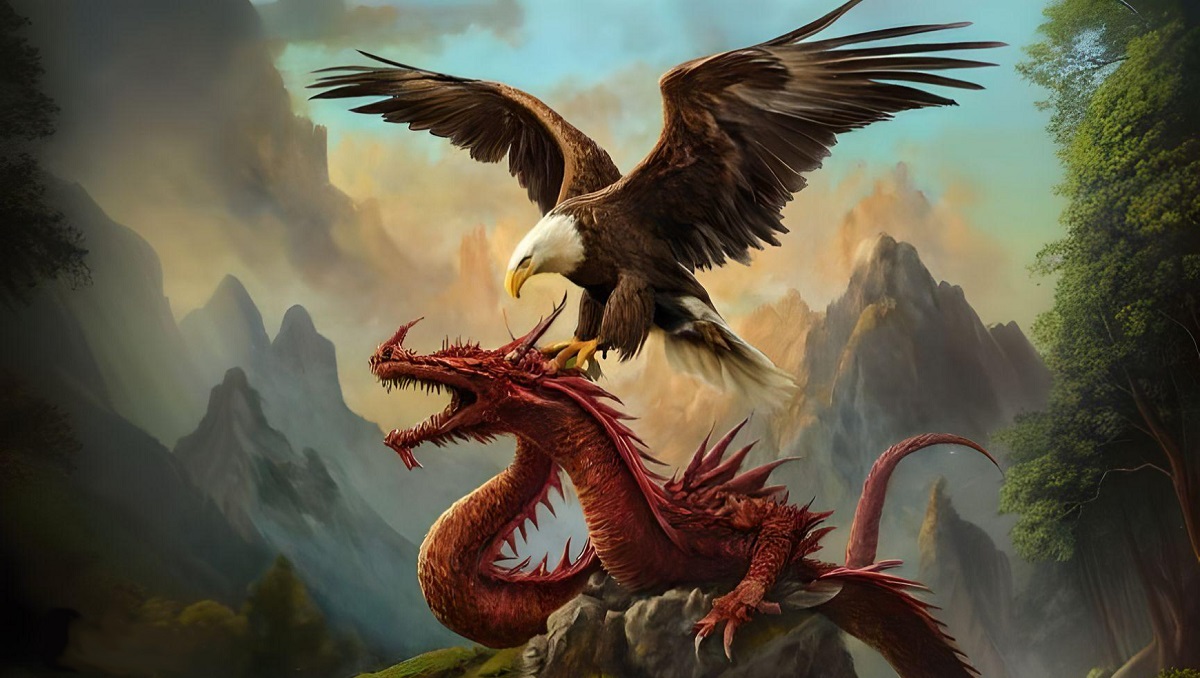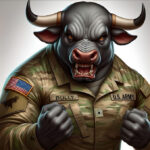
Experiential learning can be an innovative and effective method to introduce ideas governing complex adaptive systems that are inherently difficult to dissect and visualize.
The Army War College has recently responded to the Joint Staff’s guidance to refocus professional military education on the People’s Republic of China, the pacing challenge for the U.S. military, by creating a new “China Integrated Course” that serves as a capstone for the core curriculum. The new course includes lectures and seminar discussion on China’s history, foreign policy, and military capability and doctrine. However, nearly two-thirds of the contact hours—32 of 50 classroom hours—will be spent in two experiential learning exercises, or wargames, that have students apply diplomacy, information, military, and economic (DIME) power to achieve American—or, for half of the students, Chinese—national objectives.
Experiential learning can be an innovative and effective method to introduce ideas governing complex adaptive systems that are inherently difficult to dissect and visualize. Wargames can help structure this complicated reality and allow students of war to isolate individual variables to maximize learning. In the words of Peter Perla and E.D. McGrady,
“Wargames derive their power (for good or ill) from their nature as constructed narrative; they have a more powerful effect on participants than do other narrative forms, because their participants not only are spectators but must act, engaging parts of their intellect and emotions not accessed during simple storytelling … Games affect their players in ways more deeply remembered and more transformative of their personae than other techniques for entertainment and learning.”
This concept is not new and is in fact, deeply rooted within all branches of professional military education (PME) institutions; the Naval War College at Newport, Rhode Island, famously used a series of wargames it had designed in the 1930s to prepare its students for the demands of strategic leadership during the Second World War. Designing and developing a game is not necessarily a difficult process; it is, however, a slow one. Professional wargames require a three- to six-month window to design, develop, and playtest, hindering the educational apparatus from incorporating significant events within an experiential learning event at the speed of need. Simple and adaptive game models that offer an ability to test assumptions within a contemporary context offer unique educational benefits particularly at the war college level. Education-based wargames should be designed to incorporate current and future global dynamics that can keep pace with the evolution of adversarial actions.
This article will examine the application of two purpose-built games—one designed to emphasize understanding of the diplomatic, informational, and economic instruments of power and one that focuses on the application of military power—in the new Army War College China curriculum before drawing broader lessons for the Department of Defense and its interagency partners.
Pacific Posture
In 2019, the Secretary of the Army tasked the Army War College to examine competition within the U.S. Indo-Pacific Command (INDOPACOM) area of responsibility (AOR) and rethink the Army’s theater posture. The faculty partnered with Department of Strategic Wargaming members to design a wargame that could assist in identifying positional gaps that might hinder the United States in a crisis or conflict to determine whether the U.S. Army is correctly postured for the current threat.
The Pacific Posture wargame provided an opportunity for the research team to gain insights into strategies that used the instruments of national power to gain regional influence, hoping to provide a position of advantage during a crisis. Players wielded DImE (diplomacy, informational, military, and economic) actions to advance influence and ultimately gain access to regional countries, working within the context of actual recent events and a simulated (and infinitely variable) future set of international relations. Military activities were part of the teams’ actions, but there were no military engagements or events permitted that could escalate tensions past the threshold of crisis into conflict. This wargame was about competition, utilizing mechanisms reinforcing the players’ ability to apply strategic empathy and align a whole-of-government (WoG) approach to achieve their strategic goals. Although first designed as an analytic wargame, it became apparent that the game also had tremendous value as an educational tool.
The wargame was modified to span most of the INDOPACOM AOR, incorporating each country’s current relationships with China and the United States. Markers depict the strength of each relationship by indicating what level of basing rights each of the major powers would have in a crisis or conflict. Each team attempts to achieve their desired level of access, basing, and overflight (ABO) within the targeted countries by investing diplomatic, informational, or economic effort. Teams submit an investment strategy that allocates a defined amount of effort and detailed narrative. The level of detail that the teams include within their narrative partly determines the effect along with the priority that they give to that effort in relation to other activities. An adjudication cell takes these factors into account in determining the outcome, either a net gain or loss of influence for either China or the United States in that country.
To be successful [the students] must grasp the fundamentals of strategic empathy, history, and geography and work to further advance the equities of their country in a way that also benefits allies and partners.
Using the wargame Pacific Posture as an experiential learning event forces students to compete for operational access against a thinking adversary while using all the instruments of national power. To be successful they must grasp the fundamentals of strategic empathy, history, and geography and work to further advance the equities of their country in a way that also benefits allies and partners. The design and framework of the wargame permits players to address contemporary events and incorporate practical assumptions about international relations. The conflict-based wargame Pacific Overmatch incorporatesthe ABO results of Pacific Posture, holding the students accountable for the consequences of their strategy.
Pacific Overmatch
The Pacific Overmatch game focuses on the “M” of “DIME,” with game pieces that replicate weapons systems including advanced missiles, aircraft, ships, submarines, ground forces, air defense units, and special operations forces. Players assumed the roles of admirals and generals in the American or Chinese militaries, using the same leadership skills they would rely on in combat. Players plan for the employment of weapons systems, carefully keeping aircraft carriers out of range of powerful anti-ship missiles while positioning intelligence assets and submarines where they would cause the greatest dilemmas for their adversaries.
In one recent game, an Air Force officer did the hard math on how far his fighter wings could travel and still return to base safely and coordinated the orbits of refueling tankers inside the umbrella of American air defenses. An Army logistician ensured that the troops never ran out of bullets or fuel (the Russian General Staff would kill to have him working for them right now), while an electronic warfare specialist coordinated cyber and space assets to ensure that American forces could see and communicate while the Chinese forces struggled to do the same.
Unlike commercial gamers who play for enjoyment, military gamers play to glean insights they can translate into doctrinal changes or materiel acquisitions. The continuing primacy of logistics discovered during this iteration of Pacific Overmatch given lessons learned from observation of the ongoing Russian campaign in Ukraine.In contrast, the danger Chinese ground-based missile systems pose to U.S. aircraft carriers couldn’t be inferred from observation of actual contemporary conflict. The game indicated the possibility that carriers, which have ruled the waves for decades, may be receding in importance early in conflicts with near-peer competitors, replaced by the invisible but lethal attack submarine. The Army War College is probably not the final authority on this particular question — but the officers we train will be better informed when they engage in future force structure decisions in future assignments. Teaching concepts is necessary but insufficient.
Wargames represent the bridge between study and application. They are a low-cost, highly malleable means for officers to explore the implications of what they learn in a low-risk environment. Pacific Posture and Pacific Overmatch are the capstones capping six months of education and dialogue on the theory and conduct of diplomacy and war, strategy and military operations, and the leadership skills that turn materiel and soldiers (and sailors, and airmen, and Marines) into units that can fight outnumbered and win on any battlefield in the world. The officers who played the game are now better prepared to take America’s most precious assets, our sons and daughters, into harm’s way to accomplish national security objectives.
Implications for PME and the Defense Enterprise
The Army War College trains senior leaders to think strategically. Gone are the days of parochially minded leaders who merely operate across a single domain. Today, the United States wields innumerable tools to influence national security, but disjointed application of those tools can be counterproductive, especially when those who wield them cannot think beyond first order effects. To help students meet desired learning outcomes, Army War College faculty strive to find innovative ways to create experiential learning environments. Instruction on war remains critical at the Army War College, but future strategic leaders must be fluent in the language of all instruments of national power to enable the United States to effectively counter strategic competitors using Whole of Government approaches.
In response to Joint Staff guidance to emphasize understanding of the People’s Republic of China in professional military education, the Army War College has created a new capstone class on the PRC for Academic Year 2024. The China Integrated Course is built around the unclassified Pacific Posture and Pacific Overmatch wargames described above, and all members of the Army War College class of 2024 will play them next month. The strength of a wargame resides in its ability to enable players to dissect complex problems and allow their examination in an abstract but relatable format.
While there will be many bumps along the way, these wargames will produce graduates—and faculty members—who are better versed in the military policy and strategy of the PRC, in the application of U.S. joint warfighting doctrine, and in the use of wargames to educate and train national security professionals. The result will help America deter and, if necessary, fight outnumbered and win against China or any other adversary who threatens American and allied interests around the globe.
Derek Martin is a U.S. Army lieutenant colonel and a wargame designer assigned to the Center for Strategic Leadership at the U.S. Army War College.
John Nagl is Professor of Warfighting Studies at the U.S. Army War College. He is the author of Learning to Eat Soup with a Knife: Counterinsurgency Lessons from Malaya and Vietnam.
The views expressed in this article are those of the authors and do not necessarily reflect those of the U.S. Army War College, the U.S. Army, or the Department of Defense.
Photo Credit: Image generated by Gemini AI





From the second to last paragraph of our article above:
“In response to Joint Staff guidance to emphasize understanding of the People’s Republic of China in professional military education, the Army War College has created a new capstone class on the PRC for Academic Year 2024.”
Here is perhaps the best “strategic empathy” way of understanding the People’s Republic of China today and, perhaps likewise, the best “strategic empathy” way of understanding those individuals and groups, those regimes and those states and societies who already might be — and/or who might soon become — China’s natural allies (for example, Russia, Iran, N. Korea and, knowingly or unknowingly, certain population groups here in the U.S./the West) in our current conflict;
This such best “strategic empathy” way of understanding the PRC (et. al) today being, to force our war game participants — those doing both the “whole of government” (Pacific Posture?) and the “military” (Pacific Overmatch?) approaches to — at the beginning and at the end of ALL THEIR WORK — :
a. Articulate the “nature” of — and the specific threat that — the U.S./the West poses to China (etc.) — today and in the near future — and the manner in which China (et. al) are working to adequately deal with this such threat. And:
b. Articulate how the U.S./the West seeks to overcome and defeat China (et. al’s) such — defensive — strategies and efforts.
Note that, from the perspective that I offer above, the best way to “know” one’s enemies — and, thereby, to “know” the kind of competition, conflict and/or war that one is embarked upon (“neither mistaking it for, nor trying to turn it into, something that is alien to its nature”) — this is to, first and foremost, (a) “know” and acknowledge one’s self, to wit: one’s “nature,” one’s objectives, the “nature” of these such objectives, etc., and, thereby, (b) “know” the kind and the nature of the threat that one poses to various entities throughout the world (for example, entities found both here at home and there abroad). In this regard, if one’s such threat is of an existential nature, then one must expect, and one must prepare for (for example, both here at home and there abroad) an equivalent “enemy” response. It is from this such perspective, thus, that I make my “war game” recommendations above.
To get the ball rolling re: my “war game” recommendations above — to wit: — my suggestion that wargamers be required — at the beginning and end of all their work — to:
a. “Articulate the ‘nature’ of — and the specific threat that — the U.S./the West poses to China (etc.) — today and in the near future — and the manner in which China (et. al) are working to adequately deal with this such threat.” And:
b. Articulate how the U.S./the West seeks to overcome and defeat China (et. al’s) such — defensive — strategies and efforts.
As to these such recommendations, might the following prove useful to our wargamers?:
“If this (the need to accumulate additional ideological resources to combat a perceived Western liberal ‘other’) is true, then one of the most important takeaways from Pan and Xu’s paper is that the educated Chinese population continues to formulate its ideological positions either against or in support of some perception of the West. In some fundamental way, we (Chinese) continue to define ourselves in relation to the Western other. This is, in fact, how the Chinese intellectual and political world has operated since the late Qing, when the influx of Western technology, institutions, and thought forced Confucian elites to fundamentally reorient their ideological commitments. Perhaps more than any flawed conception of Confucian culture, this is what we (Chinese) should be grappling with when considering the influence of historical tradition on contemporary Chinese society.”
(The above is the concluding paragraph of the 2015 “Foreign Policy” paper “What it Means to Be ‘Liberal’ or ‘Conservative’ in China: Putting the Country’s Most Significant Political Divide in Context,” by Taisu Zhangs. Items in parenthesis there are mine.)
While the above — from the Foreign Policy paper “What it Means to be ‘Liberal’ or ‘Conservative’ in China …” — may:
a. Describe the “nature” (ideological?) of the threat that the U.S./the West poses to China (etc.) — and the specific threat (that U.S./Western ideology specifically) poses to China (etc.). And, indeed, may describe:
b. One of the ways (to wit: alternative, more “old school” and “local,” ideologies) that China (et. al) seem to be using to adequately deal with this such threat,
Where is it articulated as to how the U.S./the West — thus now confronted with these such defensive measures (both here at home and there abroad?) seeks to overcome and defeat China (et. al’s) such — defensive/counter-ideology — strategies and related efforts?
(In this regard, I need some help here/need some assistance.)
Have I made an error at my item “a” immediately above? In this regard, should I have said that “the specific threat” that the U.S./the West poses to China, etc. — that this is the threat that is posed by U.S./Western liberalism? (And, thus, not a threat posed by — much broader — “U.S/Western ideology?”)
Igi , and in darkness democracy can not survive. Trojan horse 1948.
These excerpts also — from the “Foreign Policy article “What it Means to be Liberal and Conservative in China … ” — these, also it would seem, help us to understand how China (and many other states and societies throughout the world also post-the Old Cold War?) came to see themselves as being (existentially?) threatened by Western liberalism:
“Whatever one thinks of this position, there is probably some truth to the claim that the Chinese intellectual world of the 1980s and 1990s was both predominantly liberal on political and economic issues, and distinctly hostile to traditional culture. The enormously influential documentary series ‘River Elegy,’ which combined express attacks on Confucianism with thinly veiled criticisms of the party-state apparatus, is but one example of this. Chinese liberalism was indeed often critical of traditional family structures, social hierarchies, and what it perceived as backwards elements of Confucian political and economic thought. (Thus,) In the intellectual world, at least, Chinese cultural conservatism (ex: Confucianism?) and leftism (ex: Communism?) did share two important commonalities: Both were minority positions facing a perceived liberal majority, and both encountered significant hostility from this perceived majority.
This may, in fact, be the missing explanatory element. Ideologies regularly define themselves against a perceived ‘other’ and in this case there was quite plausibly a common and powerful ‘other’ that both cultural conservatism and political leftism defined themselves against. This also explains why leftists have, since the 1990s, become considerably more tolerant, even accepting, of cultural conservatism than they were for virtually the entire 20th century. The need to accumulate additional ideological resources to combat a perceived Western liberal ‘other’ is a powerful one and it seems perfectly possible that this could have overridden whatever historical antagonism, or even substantive disagreement, existed between the two positions.” (Items in parenthesis, in the first quoted paragraph above, are mine.)
Conclusion:
Given that — much like China above — even here in the U.S./the West itself today also (and, indeed, many other states and societies throughout the world?) — various entities now seem to believe that they are being (existentially?) threatened by Western liberalism and, thus — much like China above — are seeing a rise in challenges from the left, the right, or from both;
Given these such matters, then must not the U.S. Army War College’s new “China Integrated Course” — and its Pacific Posture and Pacific Overmatch wargames — be organized, ordered and oriented more along the (worldwide/both here at home and there abroad?) “competition”, “conflict” and “war” lines that I have attempted to describe above?
(Herein, only by our “wargamers,” etc., being forced to enter into war games based — at least in part — on the worldwide/both at home and abroad “competition,” “conflict” and “war” lens that I provide above — only in this manner will our wargamers be able to gain sufficient — real, relevant and important — learning?)
Note — re: my thoughts above:
Given that this is not the first and only time — in the history of the U.S./the West — that Western liberalism has confronted challengers and challenges from (a) the left, the right, or both and/or (b) such challengers/challenges both here at home and there abroad;
Given these such matters, then should not our wargamers (a) be given instruction by the War College’s faculty as to these such historical matters and (b) be required to acknowledge and reference examples from such history in wargaming efforts and presentations?